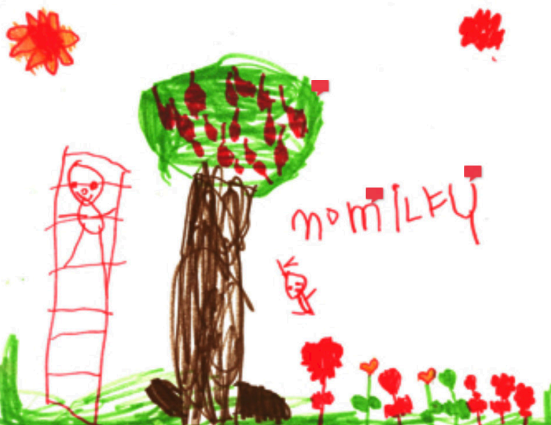English Language Arts
for Pre-Kindergarten Students
Children’s brains grow very fast when they are young. At this age, children learn languages while playing & exploring.
Tip: Hover over icons to see definitions of key terms.
This is an example tooltip!

Expectations for Students
To be ready for Kindergarten, Pre-K students should know how to:
Foundations for English Language Arts
Say their first & last name & write their first name.
Know the difference between letters in the alphabet & other symbols.

Know that in English words are written left-to-right & top-to-bottom on a page.
Identify sounds within a word & continue sound patterns.
Hear the word
Identify the sounds
Hear the sound pattern
Continue sound pattern
mat
/m/->/a/->/t/
I see a bee
asleep on a tr__
/ee/
I see a bee
asleep on a tree
chat
/ch/->/a/->/t/
The ball will fall
off the w__
/all/
The ball will fall
off the wall
Follow directions with 2 or more steps that are spoken to them.
“Do a jumping jack and then sit on the floor”
Speak loudly in complete sentences (5+ words) & clearly enough to be understood.
Continue a back & forth conversation.
Ask & answer questions in order to find help or get more information.
Retell a story.
Use words, pictures, letters, or symbols to show their thoughts & share about something they have learned or created.

[Transcript: Mom, I love you.]
Everyday Activities to Support Learning
Tips for Talking to Teachers
A strong relationship between families and teachers is key to ensuring students have what they need to succeed. Parent involvement not only leads to higher grades and test scores, but also helps students develop self-confidence, motivation, and social skills. Knowing what questions to ask at school visits and parent-teacher conferences can help you feel confident when it comes to addressing your child’s’ academic needs.

